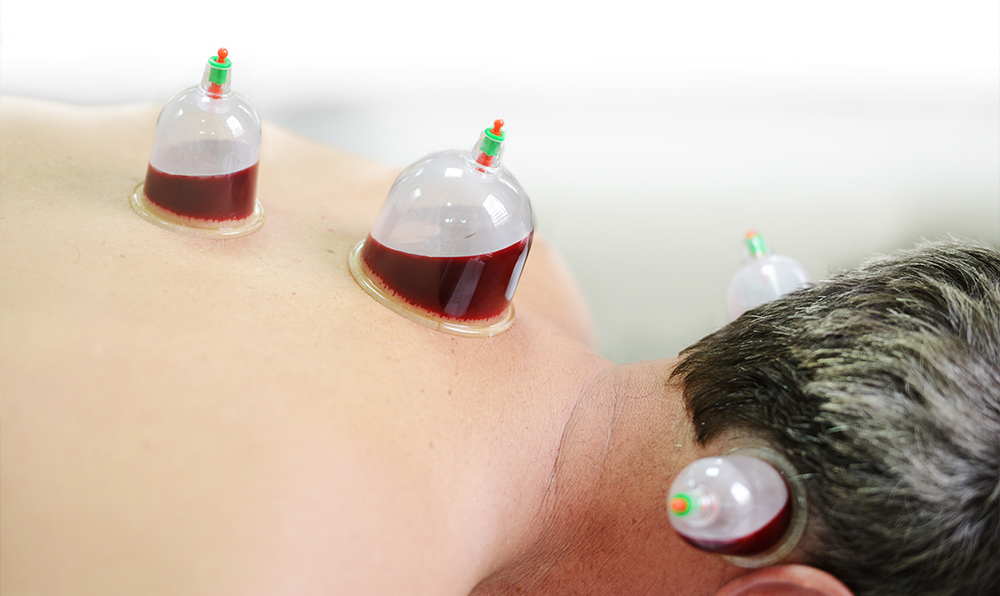
Introduction
Cupping therapy is an ancient practice that has been used for centuries to treat various ailments. It involves the use of cups made of glass, bamboo, or silicone, which are placed on the skin, and suction is created using heat or a hand pump. This suction causes the skin and underlying tissue to be drawn into the cup. Wet hijama cupping, also known as wet cupping or medicinal bleeding, is a variation of this therapy that involves making small incisions on the skin before applying the cups.
Benefits of Wet Hijama Cupping
Wet hijama cupping has a range of potential health benefits, including:
- Pain management: Wet hijama cupping is often used to treat pain, including back pain, neck pain, and headaches. It is thought to work by increasing blood flow to the affected area and promoting the release of endorphins, which are natural painkillers produced by the body.
- Improved circulation: Wet hijama cupping can help improve circulation by removing stagnant blood and other fluids from the affected area. This can help reduce inflammation and promote healing.
- Detoxification: Wet hijama cupping is believed to help remove toxins from the body, which may improve overall health and well-being.
- Stress and anxiety relief: Some people find wet hijama cupping to be relaxing and find that it helps reduce stress and anxiety.
How Wet Hijama Cupping is Performed
Wet hijama cupping is typically performed by a trained practitioner. The process typically involves the following steps:
- The practitioner will clean the area of the skin to be treated with an antiseptic solution.
- Small incisions are made on the skin using a sterilized blade.
- The cups are then applied to the skin, and suction is created using heat or a hand pump.
- The cups are left in place for 10-15 minutes.
- The cups are removed, and the practitioner will massage the area to help stimulate circulation and promote healing.
- The incisions are then covered with a bandage.
Contraindications and Risks
While wet hijama cupping is generally safe, there are some contraindications and risks to be aware of. Wet hijama cupping should not be performed on people with the following conditions:
- Blood disorders, such as hemophilia or thrombocytopenia
- Cardiovascular diseases, such as heart disease or high blood pressure
- Infections or open wounds
- Pregnancy
In addition, wet hijama cupping may cause the following side effects:
- Bruising
- Skin irritation
- Infection
- Scarring
It is essential to consult with a trained practitioner before undergoing wet hijama cupping to determine if it is appropriate for you.
Additional Uses of Wet Hijama Cupping:
In addition to pain management, wet hijama cupping has several other uses. Some of these include:
- Respiratory disorders: Wet hijama cupping may be helpful in the treatment of respiratory disorders such as asthma and bronchitis. It is thought to help improve breathing by reducing inflammation in the airways and increasing blood flow to the lungs.
- Digestive disorders: Wet hijama cupping may be helpful in the treatment of digestive disorders such as constipation and bloating. It is thought to help improve digestion by increasing blood flow to the digestive organs and promoting the release of enzymes.
- Muscular and joint problems: Wet hijama cupping may be helpful in the treatment of muscular and joint problems such as fibromyalgia and arthritis. It is thought to help reduce inflammation and improve flexibility.
- Skin conditions: Wet hijama cupping may be helpful in the treatment of skin conditions such as acne and eczema. It is thought to help improve the appearance of the skin by increasing blood flow and promoting the release of toxins.
Wet Hijama Cupping vs. Dry Cupping
Wet hijama cupping is different from dry cupping because it involves making small incisions on the skin before applying the cups. Dry cupping, on the other hand, does not involve incisions. Both types of cupping have potential health benefits, but wet hijama cupping may be more effective for certain conditions, such as muscle and joint problems and skin conditions.
Is Wet Hijama Cupping Safe?
Wet hijama cupping is generally considered to be safe when performed by a trained practitioner. However, as with any medical procedure, there are some risks to be aware of. It is essential to consult with a trained practitioner before undergoing wet hijama cupping to determine if it is appropriate for you.
What to Expect During and After Wet Hijama Cupping: During wet hijama cupping, you may feel a slight pinch as the incisions are made, and a feeling of suction as the cups are applied. The cups are typically left in place for 10-15 minutes. After the cups are removed, you may feel a sense of relief and relaxation. Some people experience bruising and skin irritation after wet hijama cupping, which typically resolves within a few days. It is essential to follow the aftercare instructions provided by your practitioner to help minimize any potential side effects.
How Often Should Wet Hijama Cupping be Performed?
The frequency of wet hijama cupping varies depending on the condition being treated and the individual’s needs. Some people may find that weekly or biweekly treatments are sufficient, while others may require more frequent treatments. It is essential to consult with a trained practitioner to determine the most appropriate frequency for your specific needs.
Conclusion
Wet hijama cupping is a natural solution for pain management and a number of other health conditions. It is generally safe when performed by a trained practitioner. Still, it is essential to consult with a practitioner to determine if it is appropriate for you and to discuss any potential risks and side effects. Wet hijama cupping may be more effective for certain conditions, such as muscle and joint problems and skin conditions. The treatment frequency will vary depending on the individual’s needs.